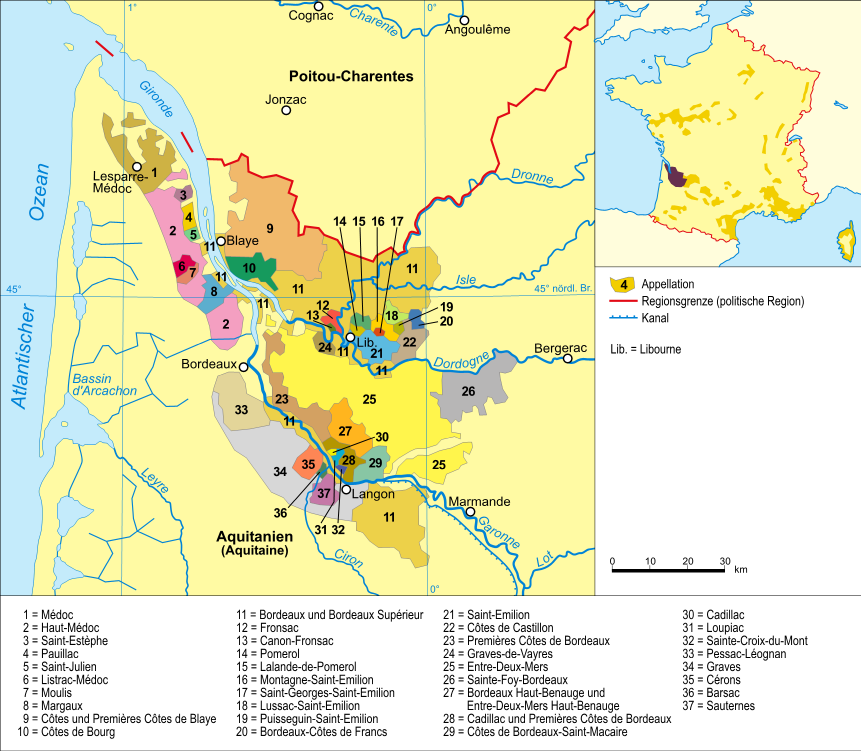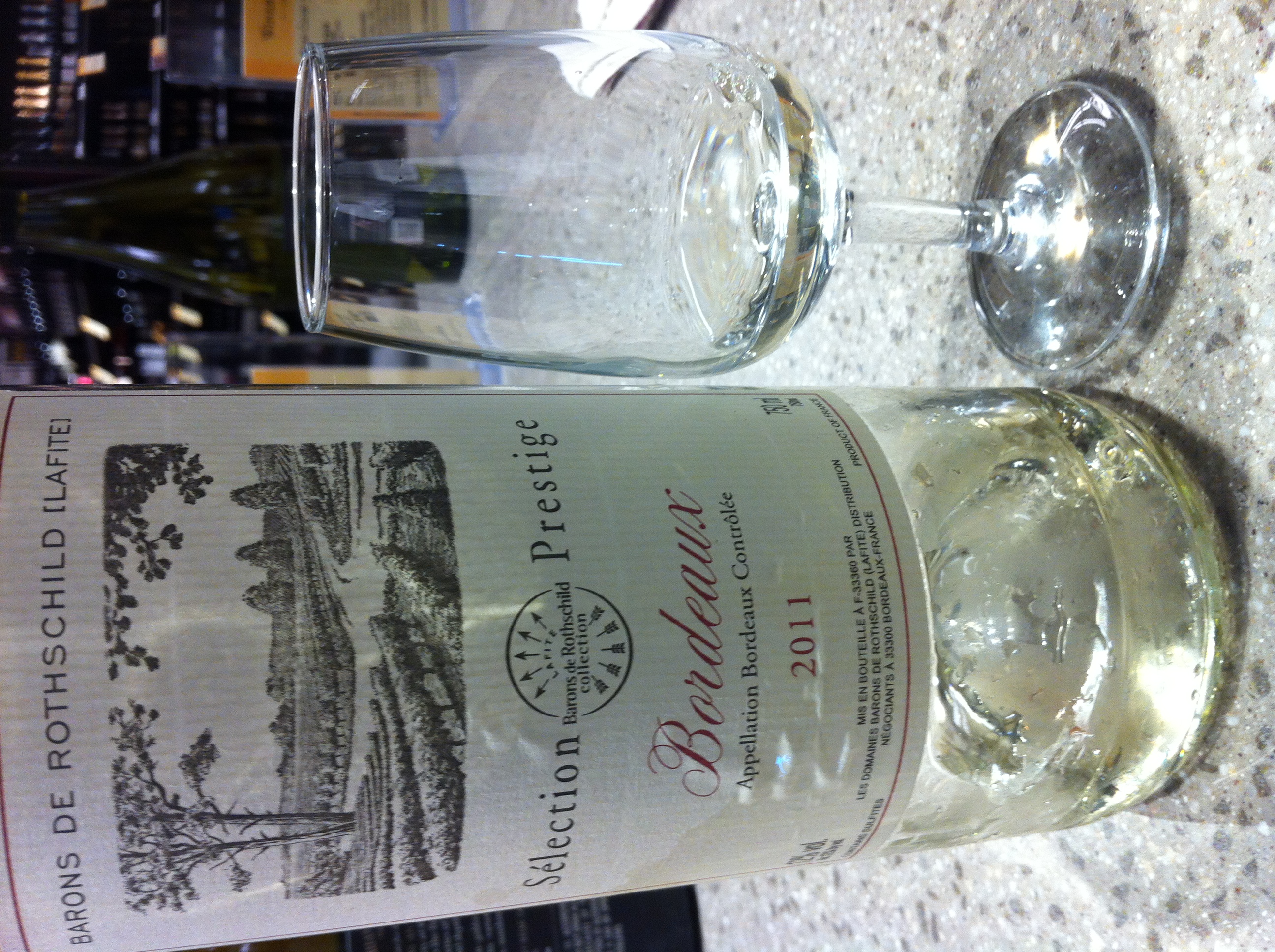|
Château Rouget
Château Rouget is a Bordeaux wine from the Appellation d'origine contrôlée, appellation Pomerol. The winery is located on the Right Bank of the Bordeaux wine region, in the commune of Pomerol in the department Gironde. As all wine produced in this appellation, Château Rouget is unclassified but the estate has been historically estimated among the great growths of the region. Rouget is situated adjacent to Château La Croix-de-Gay. The estate also produces a second wine Clocher de Rouget. History A leading estate according to early editions of ''Cocks & Féret'', the estate belonged to the mayor of Pomerol in 1804. It was bought by Marcel Bertrand in 1925 who passed on management of the estate to his nephew François-Jean Brochet in 1974. Rouget is currently owned by the Labruyere family, with consultancy by the oenologist Michel Rolland. Production The vineyard area extends 18 hectares, with grape varieties of 85% Merlot and 15% Cabernet Franc. Rouget produces on average 6, ... [...More Info...] [...Related Items...] OR: [Wikipedia] [Google] [Baidu] |
Bordeaux Wine
Bordeaux wine (; ) is produced in the Bordeaux region of southwest France, around the city of Bordeaux, on the Garonne River. To the north of the city, the Dordogne River joins the Garonne forming the broad estuary called the Gironde; the Gironde department, with a total vineyard area of 110,800 hectares, is the second largest wine-growing area in France behind the Languedoc-Rousillon. Average vintages produce over 700 million bottles of wine, ranging from large quantities of daily table wine to some of the world's most expensive and prestigious wines. The vast majority of wine produced in Bordeaux is red (sometimes called "claret" in Britain), with sweet white wines (most notably Sauternes), dry whites, and (in much smaller quantities) rosé and sparkling wines ( Crémant de Bordeaux) collectively making up the remainder. Bordeaux wine is made by more than 5,660 producers or ''châteaux''. There are 65 appellations of Bordeaux wine. History Viticulture was introduce ... [...More Info...] [...Related Items...] OR: [Wikipedia] [Google] [Baidu] |
Appellation D'origine Contrôlée
In France, the ''appellation d'origine contrôlée'' (, ; abbr. AOC ) is a label that identifies an agricultural product whose stages of production and processing are carried out in a defined geographical area – the ''terroir'' – and using recognized and traditional know-how. The specificity of an AOC product is determined by the combination of a physical and biological environment with established production techniques transmitted within a human community. Together, these give the product its distinctive qualities. The defining technical and geographic factors are set forth in standards for each product, including wines, cheeses and meats. Other countries and the European Union have similar labeling systems. The European Union's protected designation of origin (PDO and PGI) system has harmonized the protection of all geographical indications and their registration. When labelling wine however, producers may still use recognized traditional terms like AOC, and are not requ ... [...More Info...] [...Related Items...] OR: [Wikipedia] [Google] [Baidu] |
Pomerol
Pomerol (; ) is a commune in the Gironde department in Nouvelle-Aquitaine near Bordeaux in southwestern France. Wine With only , Pomerol is the smallest wine producing area in the Bordeaux region. It is more a community where the vineyards are family-shared. The mostly small-sized producers in the area produce red wines. As in the neighbouring appellation of Saint-Émilion, the predominant grape variety is Merlot, often with Cabernet Franc and smaller quantities of Cabernet Sauvignon. Unlike other Bordeaux regions, Pomerol has no official wine ranking or classification. However, wines like Château Pétrus and Château Le Pin are priced as high as the classified first growths of the Pauillac and Saint-Émilion such as Château Ausone and Château Cheval Blanc. The next-door and slightly larger "satellite" appellation of Lalande-de-Pomerol produces similar wines which are shorter-lived and less expensive. Population See also *French wine *Bordeaux wine * Plan Bordea ... [...More Info...] [...Related Items...] OR: [Wikipedia] [Google] [Baidu] |
Winery
A winery is a building or property that produces wine, or a business involved in the cultivation and production of wine, such as a wine company. Some wine companies own many wineries. Besides wine making equipment, larger wineries may also feature warehouses, bottling lines, laboratories, and large expanses of tanks known as tank farms. Wineries may have existed as long as 8,000 years ago. Ancient history The earliest known evidence of winemaking at a relatively large scale, if not evidence of actual wineries, has been found in the Middle East. In 2011 a team of archaeologists discovered a 6000 year old wine press in a cave in the Areni region of Armenia, and identified the site as a small winery. Previously, in the northern Zagros Mountains in Iran, jars over 7000 years old were discovered to contain tartaric acid crystals (a chemical marker of wine), providing evidence of winemaking in that region. Archaeological excavations in the southern Georgian region of Kvemo Kartli ... [...More Info...] [...Related Items...] OR: [Wikipedia] [Google] [Baidu] |
Bordeaux Wine Region
The wine regions of Bordeaux in France are a large number of wine growing areas, differing widely in size and sometimes overlapping, which lie within the overarching wine region of Bordeaux, centred on the city of Bordeaux and covering the whole area of the Gironde department of Aquitaine. The Bordeaux region is naturally divided by the Gironde Estuary into a Left Bank area which includes the Médoc and Graves and a Right Bank area which includes the Libournais, Bourg and Blaye. The Médoc is itself divided into Haut-Médoc (the upstream or southern portion) and Bas-Médoc (the downstream or northern portion, often referred to simply as "Médoc"). There are various sub-regions within the Haut-Médoc, including St-Estèphe, Pauillac, St.-Julien and Margaux and the less well known areas of AOC Moulis and Listrac. Graves includes the sub-regions of Pessac-Léognan and Sauternes (among others), and Sauternes in turn includes the sub-region of Barsac. The Libournais includes ... [...More Info...] [...Related Items...] OR: [Wikipedia] [Google] [Baidu] |
Gironde
Gironde ( , US usually , ; , ) is the largest department in the southwestern French region of Nouvelle-Aquitaine. Named after the Gironde estuary, a major waterway, its prefecture is Bordeaux. In 2019, it had a population of 1,623,749.Populations légales 2019: 33 Gironde INSEE The famous Bordeaux wine region is in Gironde. It has six arrondissements, making it one of the departments with the most arrondissements ( [...More Info...] [...Related Items...] OR: [Wikipedia] [Google] [Baidu] |
Château La Croix-de-Gay
A château (, ; plural: châteaux) is a manor house, or palace, or residence of the lord of the manor, or a fine country house of nobility or gentry, with or without fortifications, originally, and still most frequently, in French-speaking regions. Nowadays, a ''château'' may be any stately residence built in a French style; the term is additionally often used for a winegrower's estate, especially in the Bordeaux region of France. Definition The word château is a French word that has entered the English language, where its meaning is more specific than it is in French. The French word ''château'' denotes buildings as diverse as a medieval fortress, a Renaissance palace and a fine 19th-century country house. Care should therefore be taken when translating the French word ''château'' into English, noting the nature of the building in question. Most French châteaux are "palaces" or fine "country houses" rather than "castles", and for these, the word "château" is appropria ... [...More Info...] [...Related Items...] OR: [Wikipedia] [Google] [Baidu] |
Second Wine
Second wine or second label (French: ''Second vin'') is a term commonly associated with Bordeaux wine to refer to a second label wine made from '' cuvee'' not selected for use in the ''Grand vin'' or first label. In some cases a third wine or even fourth wine is also produced. Depending on the house winemaking style, individual plots of a vineyard may be selected, often those of the youngest vines, and fermented separately, with the best performing barrels being chosen for the house's top wine and the other barrels being bottled under a separate label and sold for a lower price than the ''Grand vin''. In less favorable vintages, an estate may choose to release only a second label wine rather than to release a smaller than normal quantity of its ''Grand vin'' or a wine that would not be consistent with past vintages under that name. The practice has its roots in the 18th century but became more commercially prominent in the 1980s when consumers discovered these wines as a more ... [...More Info...] [...Related Items...] OR: [Wikipedia] [Google] [Baidu] |
Cocks & Féret
''Cocks & Féret'', or simply ''Féret'', is the colloquial name of a Bordeaux wine directory originally created by Charles Cocks and Michel-Édouard Féret in 1846, which was published under the name ''Bordeaux, its Wines and the Claret Country'' and translated into French and published as the first edition of ''Bordeaux et ses vins'' in 1850.winepros.com.au. It is regarded as the classic reference work on Bordeaux wines, and is to date considered the most comprehensive information source on Bordeaux' wineries.winepros.com.au. amazon.co''Bordeaux and Its Wines'' 15th edition, Hugh Johnson preface/ref> History Jean-Baptiste Féret founded the publishing house La Librairie Féret in Bordeaux in 1812, which became Féret et fils in 1841. In 1846 Michel-Édouard Féret approached Charles Cocks, an English schoolmaster and wine enthusiast living in Bordeaux since 1840, to publish a directory of wine aimed at his compatriots. At 84 pages containing historical observations and assessme ... [...More Info...] [...Related Items...] OR: [Wikipedia] [Google] [Baidu] |
Oenologist
Oenology (also enology; ) is the science and study of wine and winemaking. Oenology is distinct from viticulture, which is the science of the growing, cultivation, and harvesting of grapes. The English word oenology derives from the Greek word ''oinos'' ( οἶνος) "wine" and the suffix ''–logia'' ( -λογία) the "study of". An oenologist is an expert in the science of wine and of the arts and techniques for making wine. Education and training University programs in oenology and viticulture usually feature a concentration in science for the degree of Bachelor of Science (B.S, B.Sc., Sc.B), and as a terminal master's degree — either in a scientific or in a research program for the degree of Master of Science (M.S., Sc.M.), e.g. the master of professional studies degree. Oenologists and viticulturalists with doctorates often have a background in horticulture, plant physiology, and microbiology. Related to oenology are the professional titles of ''sommelier'' and master ... [...More Info...] [...Related Items...] OR: [Wikipedia] [Google] [Baidu] |






